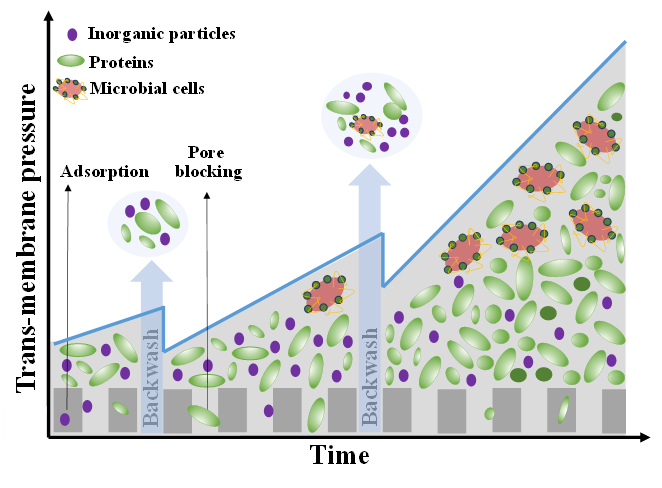Understanding and controlling membrane fouling in biorefinery applications
- Persons involved: Ali Zain Hameed (PhD), Wiebe de Vos (Promotor), Antoine Kemperman (Co-promotor), Irena Paranowska (Alfa Laval), Frank Lipnizki (Lund University)
- Duration: 2024-2028
- Funding: HORIZON-MSCA-2022-DN
Introduction
There is already well-established knowledge on membrane applications in desalination and various water and wastewater treatment processes. However, the requirements for membranes in biorefinery applications differ significantly from those used in conventional water treatment. In biorefineries, membranes play a crucial role in selective fractionation, enabling the production of enriched and concentrated product streams. Additionally, membrane stability under extreme conditions—such as high temperatures, acidic or alkaline environments, and exposure to novel solvents—is far more critical than in water treatment.
Moreover, biorefinery streams are typically rich in diverse organic compounds, which can lead to severe membrane fouling if membrane-solute interactions are not well understood. To advance the use of membranes in biorefineries, a comprehensive approach is needed—one that integrates new membrane materials, improved fouling control strategies, extended membrane lifespan, and optimized processes.
Key words
Biorefinery, Membrane Fouling, Nanofiltration, Membrane Cleaning
Technological/Scientific challenges
This project aims to push forward the application of membrane technology in the biorefining sector, supporting the transition from a fossil fuel-based linear economy to a sustainable circular economy. While membrane fouling has been extensively studied in water treatment, its mechanisms and control strategies in complex biorefinery streams remain largely unexplored. This research seeks to:
- Understand fouling mechanisms specific to biorefinery applications.
- Develop strategies to prevent and control fouling for improved membrane performance.
- Enhance the efficiency of membrane cleaning using innovative techniques.
- Explore biomimetic self-cleaning approaches to extend membrane lifespan.
To achieve these goals, fouling mechanisms will be studied using real-time experimental techniques at Lund University. Advanced analytical tools, including ellipsometry, quartz crystal microbalance with dissipation (QCM-D), ATR-FTIR spectroscopy, Scanning Electron Microscopy (SEM), and X-ray Photoelectron Spectroscopy (XPS), will be employed to investigate fouling behavior. This integrated approach will provide valuable insights for the sustainable and efficient use of membrane technology in biorefineries.
Objectives
The long-term objective of this project is to identify membrane fouling mechanisms and validate fouling models, ultimately leading to the development of effective fouling control strategies. The first goal is to conduct detailed fouling studies using both artificial and real biorefinery streams. This will involve state-of-the-art fouling characterization techniques, such as Raman spectroscopy, ATR-FTIR, and SEM-XPS, in combination with membrane fouling models. The insights gained from these studies will be shared with other doctoral candidates in the network, enabling them to better interpret their own fouling observations.
Building upon this understanding, the project will focus on optimizing process conditions and cleaning strategies for biorefinery applications. By systematically adjusting operational parameters, the aim is to minimize fouling while maximizing membrane selectivity. Cleaning protocols will be refined and tested to improve fouling removal efficiency and extend membrane lifetime.
To further enhance fouling control, the project will develop an innovative sacrificial layer approach. This involves coating membranes with a thin, protective polymer layer that can be selectively removed through a specific trigger, such as changes in pH or salinity. Once fouling occurs, the protective layer—along with the accumulated foulants—can be easily removed, leaving the membrane clean and functional. A simple, water-based recoating process will then restore the membrane’s protective barrier, ensuring continuous operation with minimal downtime.


